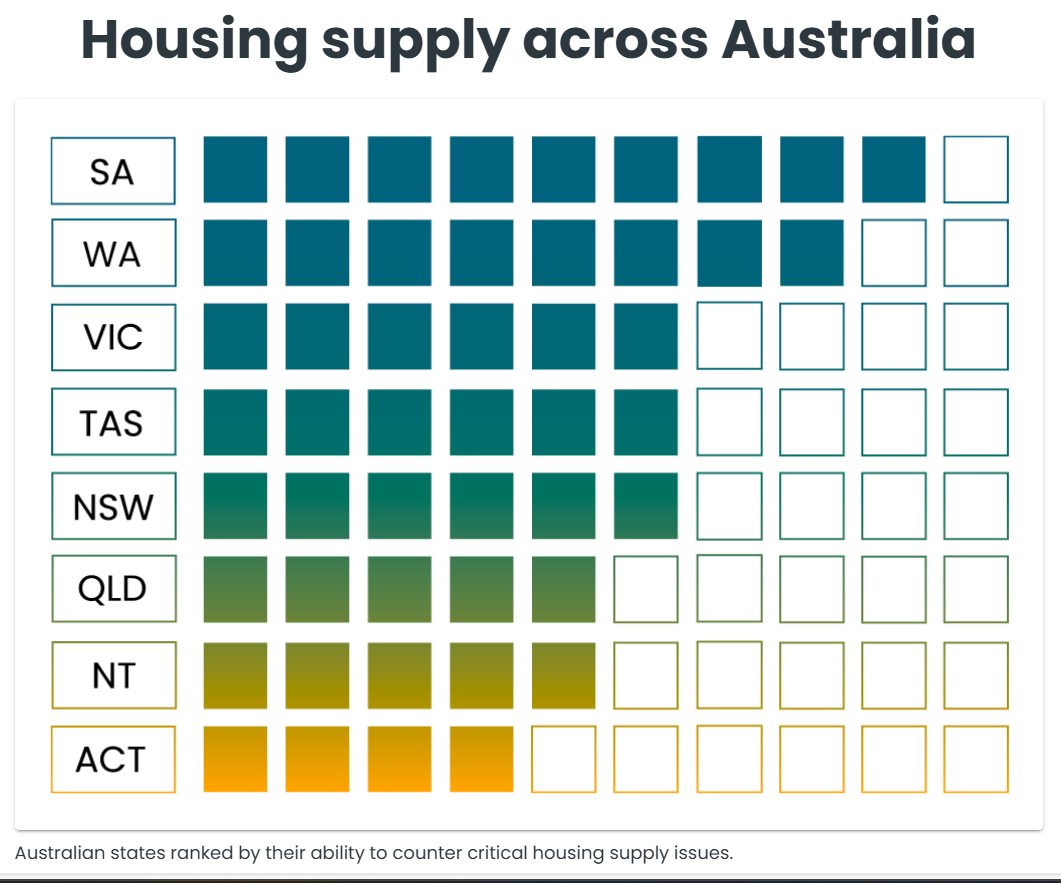

The inaugural release of the Housing Industry Association's (HIA) Housing Policy Scoreboard offers a critical evaluation of state and territory contributions to the National Housing Accord's ambitious targets.
This detailed analysis focuses on the individual efforts to meet and potentially exceed the mandate for increased housing provision.
This looming shortfall underscores a severe challenge, potentially exacerbating the existing affordability crisis in the housing sector.
In response to a persistent undersupply and escalating housing affordability issues, the Australian government has set ambitious targets under the National Housing Accord.
The goal is to create 1.2 million new homes by June 2029.
States and territories play a pivotal role, with specific quotas to meet that are supported by federal funding initiatives aimed at spurring development.
Significant financial commitments have been made to support the states and territories in achieving these targets:
The HIA’s scoreboard evaluates each region based on ten critical policy measures that influence housing supply. These measures range from existing successful policies to innovative new strategies proposed to accelerate development.
Despite commendable initiatives, NSW showed a pattern of inconsistent progress in housing policy implementation.
Efforts to expedite development approvals are noteworthy, but the overall impact remains to be fully realised.
The government’s mixed results in improving Greenfield land supply and adjusting stamp duty incentives reflect a broader struggle to maintain consistent policy momentum.
The Property Council’s Katie Stevenson recently lauded early governmental efforts like the Housing Delivery Authority and transit-oriented development reforms. Yet noted that NSW is still on track to fall short of its National Housing Accord target by 185,000 homes.
Victoria's approach has shifted from leading with innovative policies to a more cautious stance, marked by increased taxation rather than direct supply boosts.
While the $5.3 billion Big Housing Build remains a significant commitment, new taxes on short-stay accommodations raise concerns about their long-term effectiveness on housing availability.
Facing significant migration and housing demand pressures, Queensland’s response includes strategic planning reforms and substantial financial incentives for first home buyers.
However, the state still grapples with efficient land use and development processes, highlighting the need for more decisive actions to meet its housing targets.
Praised for its proactive strategies, South Australia leads with robust planning reforms and substantial investments in residential construction trades.
These efforts are complemented by policies that significantly benefit first home buyers, setting a strong example of integrated policy action to boost housing supply.
WA’s targeted programs like the Keystart initiative and a state-based shared equity scheme highlight its commitment to supporting first home buyers and stimulating housing construction.
Yet, there’s room for improvement in streamlining land development processes to better meet growing housing demands.
Both regions show unique approaches, with Tasmania focusing on social housing and innovative financing schemes, while the Northern Territory offers substantial financial incentives to first home buyers.
However, both face challenges in aligning their strategies with rapid development needs.
The ACT struggles with policy implementation that aligns with its housing targets, particularly in terms of land release and development approvals. While there are promising initiatives, more coherent planning and execution are required to meet the growing demand for housing in the region.
The HIA Housing Policy Scoreboard underscores the necessity for all states and territories to not only continue but also enhance their efforts in housing policy innovation and implementation.
As the National Housing Accord continues to evolve, the scoreboard will serve as a benchmark, urging regions to refine strategies and invest wisely to meet and exceed their housing production goals.
This dynamic approach is essential for addressing Australia’s housing affordability crisis effectively and sustainably.
